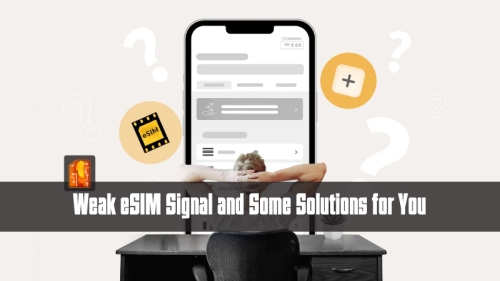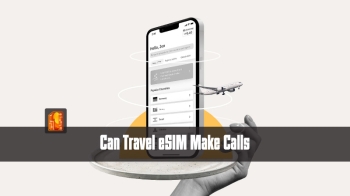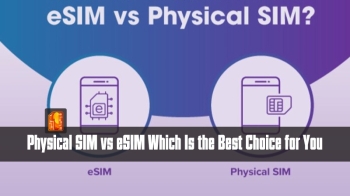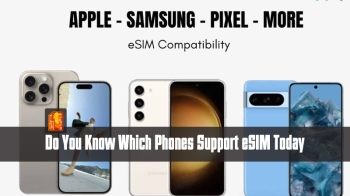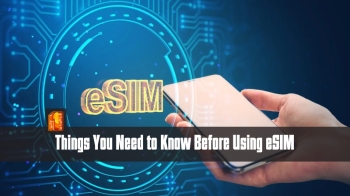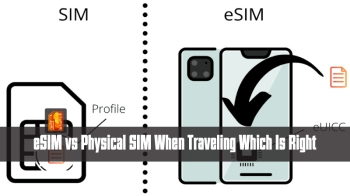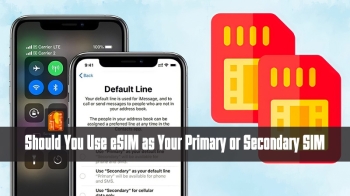What is a Physical SIM?
SIM stands for Subscriber Identity Module. A physical SIM is the traditional SIM card, usually inserted into the SIM slot of a mobile device. It is a type of smart memory card used in mobile devices, storing information such as your regular phone number and supporting essential mobile functions like calling, texting, internet connectivity, and network access.
Physical SIMs are made of plastic and come in standard sizes such as mini SIM, micro SIM, and nano SIM, depending on the device. This is also the original SIM type that paved the way for later SIM technologies.
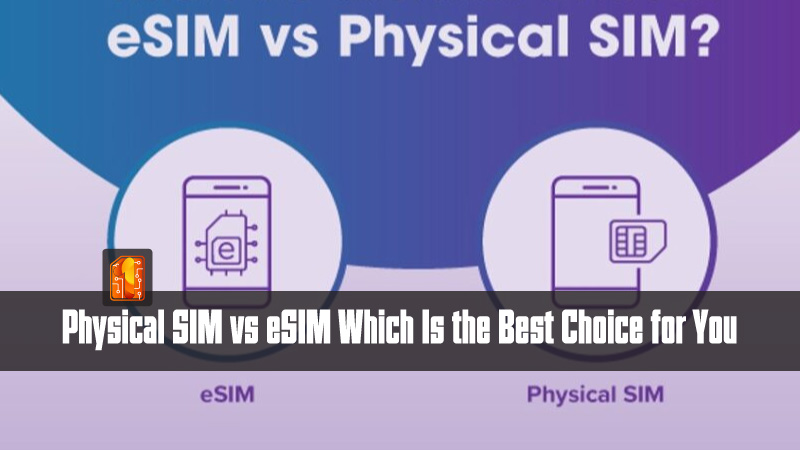
What is an eSIM?
An eSIM is a type of electronic SIM with an extremely small size, soldered directly onto the device’s motherboard during manufacturing. However, it still has the same role and functions as a regular physical SIM.
eSIM was first introduced in 2017, but after Apple announced this technology on its iPhone models in 2018, eSIM became more widely known. Today, eSIM is increasingly popular and supported on many devices, promising to eventually replace physical SIM cards entirely.
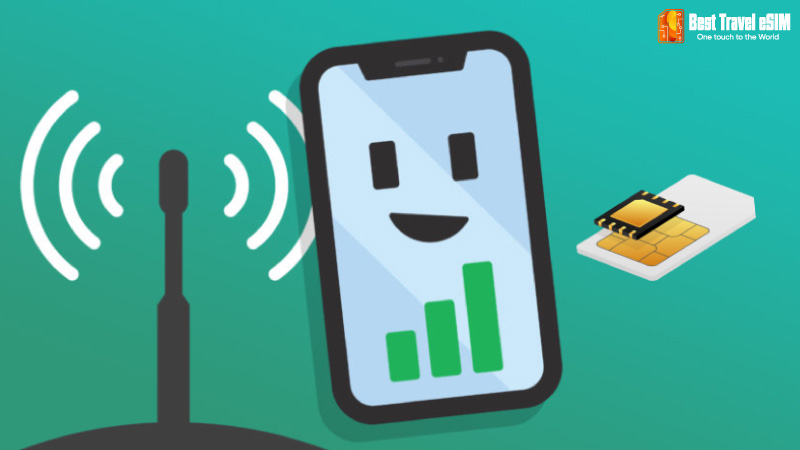
Comparison of Similarities Between Physical SIM and eSIM
Similarities:
Physical SIM and eSIM are both types of phone SIM cards with the same functions, including authentication and connecting to mobile networks. Both are used for making calls, sending messages, and utilizing carrier services. eSIM and physical SIM both store information related to network services such as phone numbers, billing information, and authentication codes. Both require management to ensure connection quality and information security
Differences:
-
Size: eSIM is much smaller than a physical SIM. The smallest physical SIM currently is the nano SIM, which measures 12.3 x 8.8 x 0.67 (mm). In comparison, eSIM measures only 6 x 5 x 0.67 (mm).
-
Placement: Traditional physical SIMs are inserted into the SIM slot on a mobile device and can be easily removed or replaced. In contrast, eSIM is soldered directly onto the device’s motherboard during manufacturing and cannot be removed.
-
Supported Devices: Currently, almost all mobile devices support physical SIM cards. Phone models such as iPhone, Samsung, Google, Oppo, and others produced from 2018 onwards also support eSIM. Additionally, many other devices like smartwatches and tablets support eSIM as well.
-
Activation: A physical SIM must be inserted into the SIM slot to operate, while an eSIM is activated and used by scanning a QR code provided by the carrier.
-
Management: Physical SIM cards are often removed and switched between different mobile devices. Therefore, users need to pay attention to storage and management through software and device settings.
The above is a comparison between physical SIM and eSIM. Although they share the same functions, there are some differences in installation and management. Depending on your needs, you can choose either a physical SIM or an eSIM, or even use both types simultaneously.
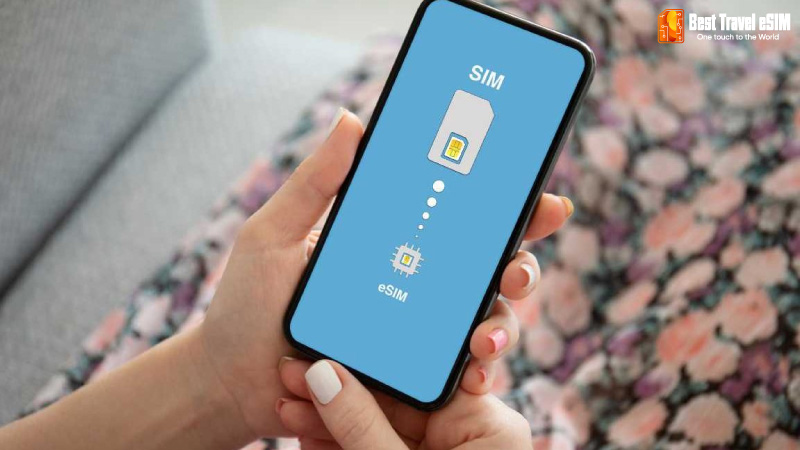
Where to Buy a Reliable Travel eSIM
When preparing for international travel or an overseas assignment, it’s wise to opt for an eSIM provider with a strong reputation for quality service, transparent pricing, and reliable coverage. A dependable eSIM helps you stay online, manage your expenses, and enjoy greater flexibility while exploring new destinations. Notable options in the market include eSIMONE, eSIM Global, eSIMdulich, Airalo, Holafly, Get Nomad, Sally, and others. For the most up-to-date list of recommended providers, you can visit top.bestesimtravel.com, where new options are regularly added to help you make the best choice for your journey.

